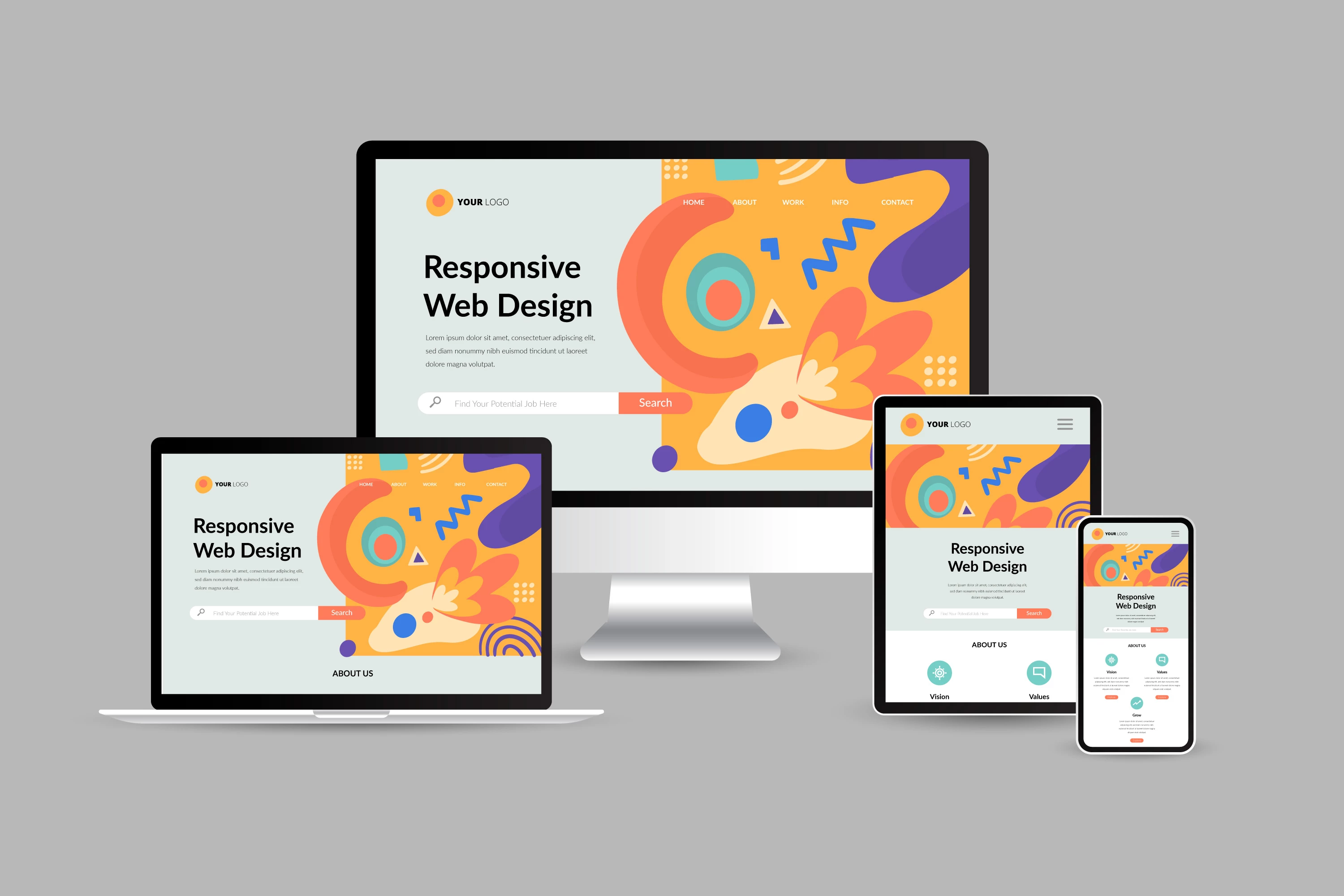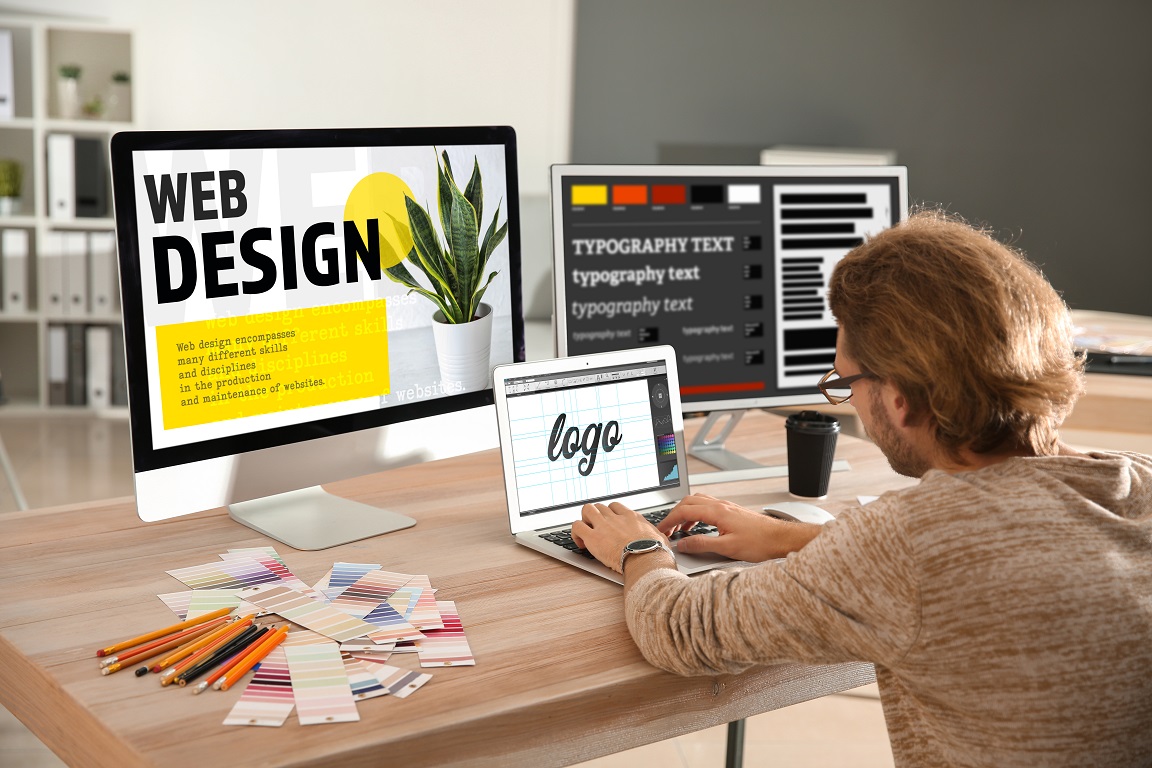The Most Effective Sorts Of Website Design to Boost User Experience and Involvement
In the ever-evolving landscape of electronic communication, the effectiveness of Web design substantially influences customer experience and involvement. Various style methods, such as minimalist, responsive, and interactive designs, each offer unique benefits that can provide to varied customer demands.
Minimal Web Design
As electronic landscapes become progressively chaotic, minimalist website design has actually arised as an effective technique to enhancing individual experience. This layout philosophy focuses on simplicity, focusing on important elements while getting rid of unnecessary distractions. By utilizing ample white area, simple navigating, and a restricted shade scheme, minimalist layout fosters clearness and directs user interest to key material.
The core concept of minimal website design is to produce a smooth communication for users. By minimizing cognitive load, users can promptly comprehend information without really feeling bewildered. This direct technique not only improves usability but also motivates involvement, as visitors are most likely to discover a site that is aesthetically attractive and simple to browse.
Furthermore, minimal style usually emphasizes typography and images, utilizing these components strategically to communicate messages properly. In significance, minimal Web style is not simply a fad; it is a thoughtful methodology that identifies the significance of user-centered layout.
Receptive Website Design
In today's diverse electronic atmosphere, receptive Web design has become vital for creating a seamless user experience throughout a wide range of tools. As users gain access to sites on smart devices, laptops, desktops, and tablet computers, the capacity of a site to adjust its layout and web content to various screen sizes and resolutions is essential.
Receptive website design employs flexible grids, photos, and CSS media inquiries to make certain that Web material is provided optimally, no matter the gadget made use of. This strategy not just boosts the aesthetic allure of a website but likewise substantially enhances usability. Individuals are a lot more likely to engage with a site that provides a regular experience, as it removes the disappointment of having to zoom in or scroll exceedingly.
Furthermore, internet search engine, consisting of Google, focus on mobile-friendly websites in search positions. By adopting responsive style, businesses can boost their visibility and get to a broader target market. This method also streamlines internet site upkeep, as a single variation of the site can provide to all devices, decreasing the need for multiple variations. In summary, responsive website design is an essential practice that enhances user experience, engagement, and general contentment.
Interactive Website Design
Responsive Web style prepares for enhancing user experience, yet interactive website design takes this a step further by involving users in an extra vibrant method - Aligned Position Web Design. By integrating aspects such as animations, clickable models, and real-time feedback, interactive Web layout mesmerizes customers, attracting them into a richer browsing experience
This technique not only cultivates involvement however likewise motivates customers to discover content proactively instead of passively eating it. Techniques such as gamification, where customers earn rewards for finishing tasks, can substantially boost the time invested in a site and improve overall fulfillment. Interactive attributes can streamline complicated info, making it much more enjoyable and digestible.

Integrating interactive layout elements can additionally right here lead to higher conversion prices, as users are a lot more most likely to engage with a site that proactively involves them. Aligned Position Web Design. Eventually, interactive Web design transforms individual experiences right into memorable trips, guaranteeing that site visitors return time and again
Apartment Design
Characterized by its minimalistic strategy, level design emphasizes simplicity and capability, removing unnecessary elements and concentrating on necessary attributes. This design viewpoint prioritizes functionality, making certain that customers can browse user interfaces effortlessly and efficiency. By employing a clean aesthetic, flat style gets rid of the mess often found in extra luxuriant designs, consequently improving user concentrate on web content and capability.
The characteristic of level style lies in its use of vibrant colors, easy typography, and geometric shapes. These elements contribute to a visually attractive user interface that is both contemporary and approachable. Furthermore, flat style promotes a feeling of clearness, enabling customers to determine necessary activities and info without interruption.
Furthermore, flat layout is especially reliable in receptive Web style, as its simpleness translates well across different tools and screen sizes. By concentrating on crucial attributes, level design not only fulfills customer needs but likewise urges smooth interaction, making it an important element of reliable Web layout methods.
Adaptive Website Design
Adaptive website design tailors the individual experience by producing multiple dealt with formats customized to different display sizes and tools. Unlike responsive design, which fluidly have a peek at these guys adjusts a single layout, adaptive design employs distinctive formats for specific breakpoints, making sure optimum discussion on numerous systems. This technique enables developers to concentrate on the special features of each tool, boosting use by supplying specifically what individuals need based on their context.
One of the primary benefits of flexible website design is its ability to optimize load times and efficiency. By offering tailored material and images that fit the user's tool, internet sites can decrease information usage and improve loading rates. This is specifically advantageous for users with slower connections or minimal data plans.

In addition, adaptive layout assists in a much more constant and regulated branding experience. Since designers develop multiple designs, they can make sure that the aesthetic elements line up with the brand name's identity throughout different platforms - Aligned Position Web Design. This leads to a natural user experience, enhancing interaction and advertising customer retention
Conclusion
Finally, the assimilation of minimal, responsive, and interactive website design principles considerably boosts user experience and interaction. Minimal layout cultivates quality and focus, while receptive design guarantees versatility throughout various gadgets, promoting access. Interactive design mesmerizes users through dynamic aspects, urging exploration and personalization. Collectively, these design approaches add to the creation of user-friendly atmospheres that not just enhance fulfillment yet likewise drive greater conversion rates, highlighting their critical value in contemporary Web style methods.

Minimal layout cultivates quality and emphasis, while responsive style makes certain adaptability across various devices, promoting availability. Collectively, these layout comes close to add to the production of straightforward settings that not just boost satisfaction but also drive higher conversion rates, underscoring their vital value in contemporary Web design strategies.